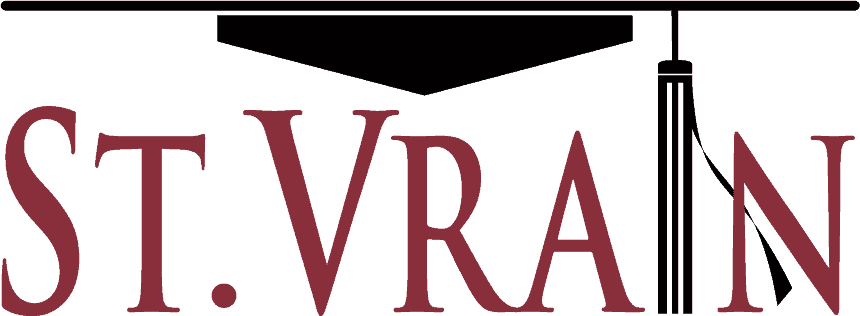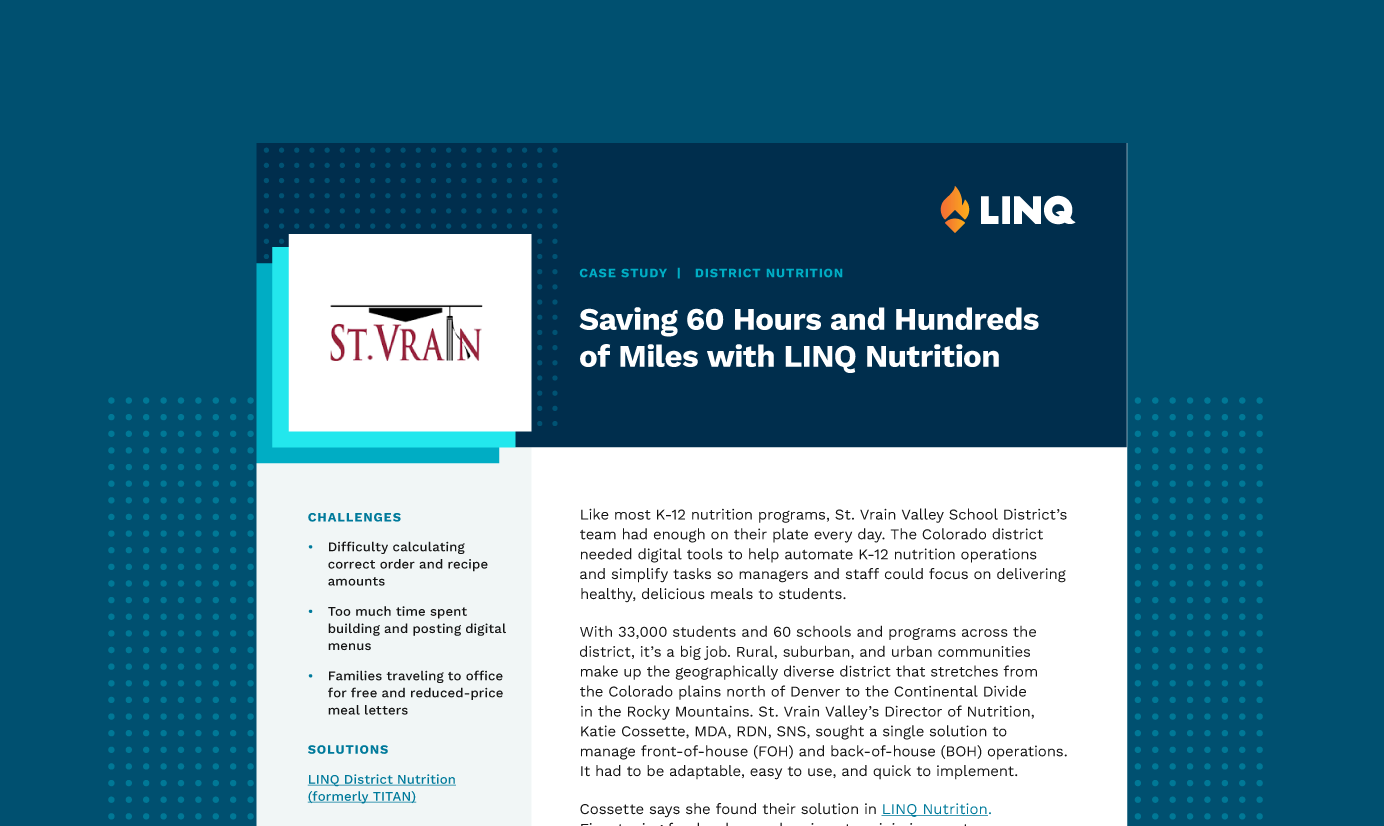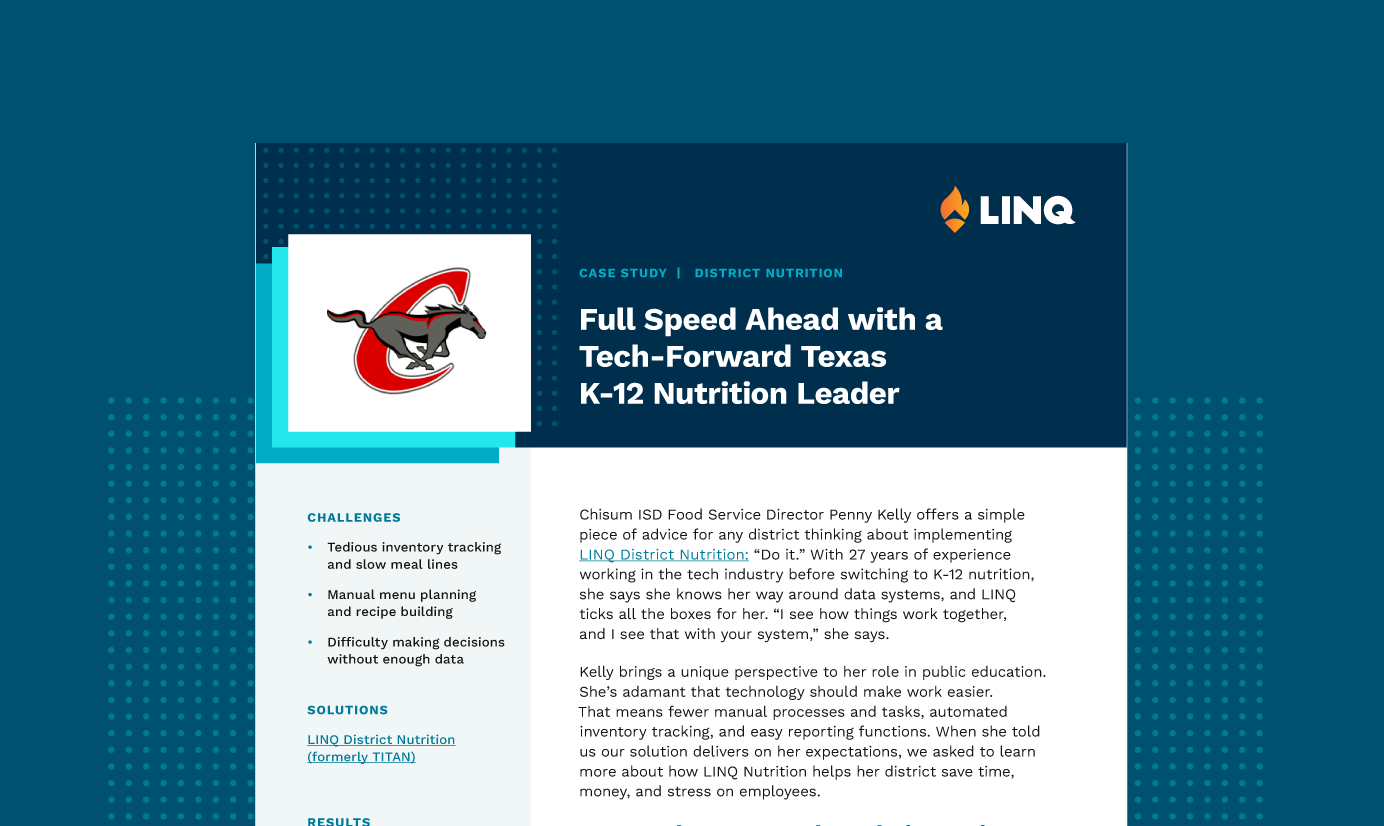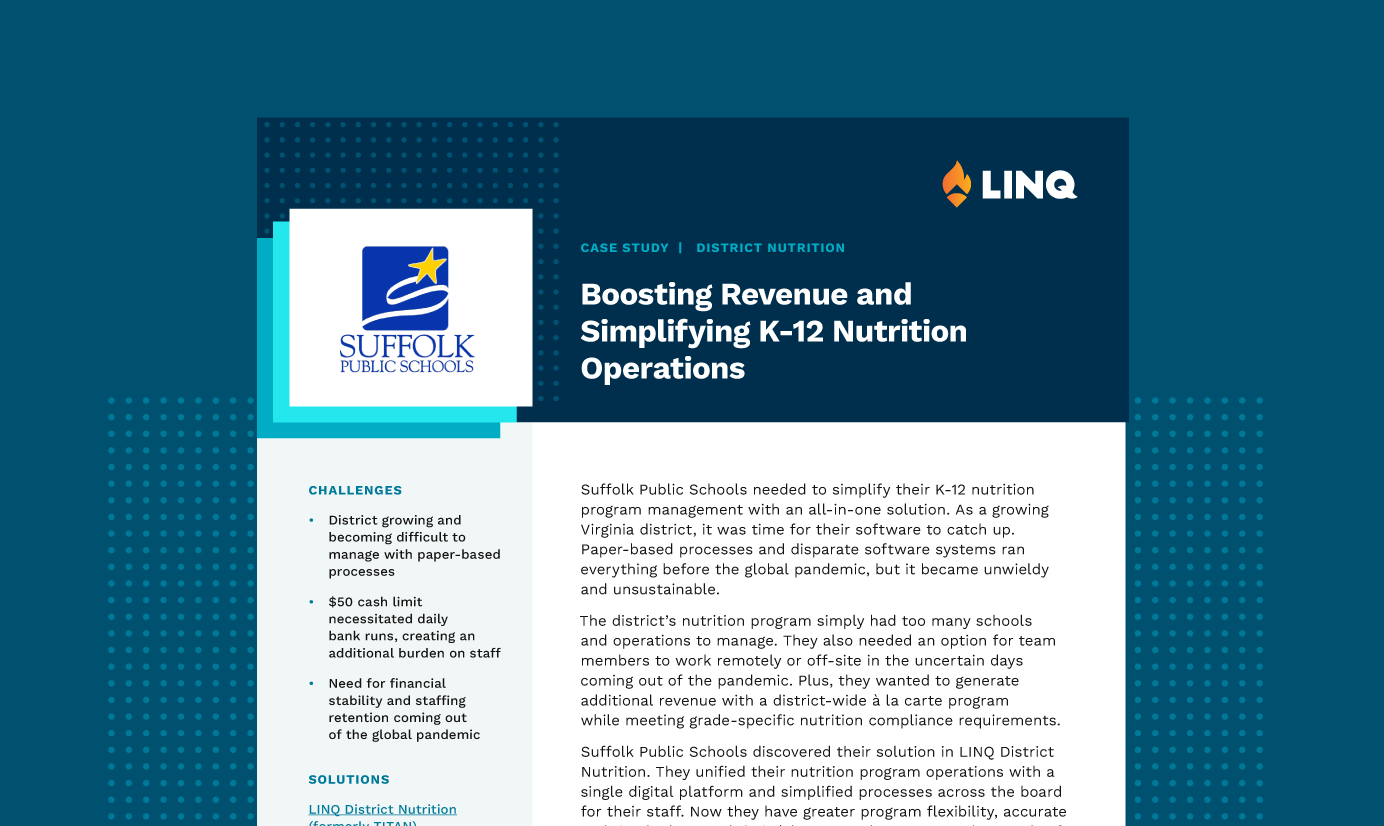Skip to Section:
- Minimizing waste with automated, accurate food ordering
- Eliminating tedious menu building and posting
- Saving families a cross-county trip to pick up free and reduced-price meal letters
- Growing and thriving with a time- and money-saving K-12 nutrition solution
- Full Speed Ahead with a Tech-Forward Texas K-12 Nutrition Leader
- Boosting Revenue and Simplifying K-12 Nutrition Operations
- Staffing Shortages Affect 52% of K-12 Nutrition Programs

“My 5 supervisors were spending about 15 hours each week doing orders… now it takes them maybe 2 hours each week.”
Katie Cossette, MDA, RDN, SNS
Director of Nutrition
St. Vrain Valley School District, CO
Like most K-12 nutrition programs, St. Vrain Valley School District’s team had enough on their plate every day. The Colorado district needed digital tools to help automate K-12 nutrition operations and simplify tasks so managers and staff could focus on delivering healthy, delicious meals to students.
With 33,000 students and 60 schools and programs across the district, it’s a big job. Rural, suburban, and urban communities make up the geographically diverse district that stretches from the Colorado plains north of Denver to the Continental Divide in the Rocky Mountains. St. Vrain Valley’s Director of Nutrition, Katie Cossette, MDA, RDN, SNS, sought a single solution to manage front-of-house (FOH) and back-of-house (BOH) operations. It had to be adaptable, easy to use, and quick to implement.
Cossette says she found their solution in LINQ Nutrition. Fine-tuning food orders and recipes to minimize waste, automatically posting digital menus, and self-service access to free and reduced-meal letters are three of the biggest budget and time savers they’ve realized. “There’s a lot of automation that takes the guesswork out,” she explains. Since the software does the predictions, calculations, and information posting, there’s less strain on managers and staff.
Minimizing waste with automated, accurate food ordering
Food waste hits tight budgets hard. Cossette says LINQ Nutrition enables data-driven food ordering so that kitchens get what they need without buying too much. It also calculates recipe amounts from any quantity. Staff and managers can create a recipe for a single serving, and the system automatically scales it to any quantity requested.
As a result, less goes to waste and the nutrition program operates more efficiently. The team only handles and stores the correct amounts of food they need, and they’re not faced with a constant scramble to find a use for extra items or offer alternatives because supplies ran out.
Cossette estimates LINQ Nutrition saves more than 60 hours per week on ordering across her district. “My five supervisors were spending about 15 hours each week doing orders because they had to take the spreadsheet figures and enter them into our financial software. Now it takes them maybe two hours each week,” she says. That’s a work week and a half saved by letting technology do the heavy lifting.
Automated ordering also eliminates the chance for human error in final figures. “It tells the managers what to order,” Cossette says. “That helps them forecast and do their jobs more efficiently… they’re not just making up 250 servings of something and then throwing half of it away.” Food in the trash equates to wasted time and money.
Eliminating tedious menu building and posting
While it’s a core function of nutrition program operations, Cossette says creating and posting menus simply took too long with their previous software. “It took forever,” she remembers. Updating menus with LINQ Nutrition takes minutes. Items and nutrition information stored in the system quickly populate so staff members can update it and move on with their day. They don’t have to carve out a significant portion of their schedule to work on menu building.
Cossette also says the LINQ Nutrition menu looks great. and is intuitive for families. “It’s very clean and nice looking,” she explains. Since populating the menu doesn’t involve a lot of manual typing each time, item names and descriptions stay consistent.
Saving families a cross-county trip to pick up free and reduced-price meal letters
LINQ Connect, our payments application included with LINQ Nutrition, saves families a very long drive in the 411-square mile St. Vrain Valley School District. It offers self-service access to free and reduced-price meal letters that families can access and print any time they need one.
“We can’t print their letter and send it,” she explains, “so some families would have to drive across the whole district just to ask us to print their letter.” Instead, families now have 24/7 access to both their letter and meal application instructions through LINQ Connect. Making it easier for families to access the information they need and complete the meal applications process provides critical support and simplicity.
Growing and thriving with a time- and money-saving K-12 nutrition solution
Cossette speaks highly of her district’s LINQ Nutrition implementation and looks forward to implementing the point-of-sale (POS) side of the solution this year. Once complete, they’ll be able to rely on a fully integrated FOH and BOH system. She’s confident in the software’s reliability because of their positive experience so far.
Going forward, St. Vrain Valley’s nutrition team can grow and scale their operations with a solution built to support them. Adding more buildings, serving more meals, and accurately ordering larger amounts of product and supplies will be no problem—they can focus on providing quality, delicious meals and snacks for students.
Learn more about how LINQ Nutrition offers districts a fully integrated FOH and BOH solution to simplify inventory, purchasing, and production records.



